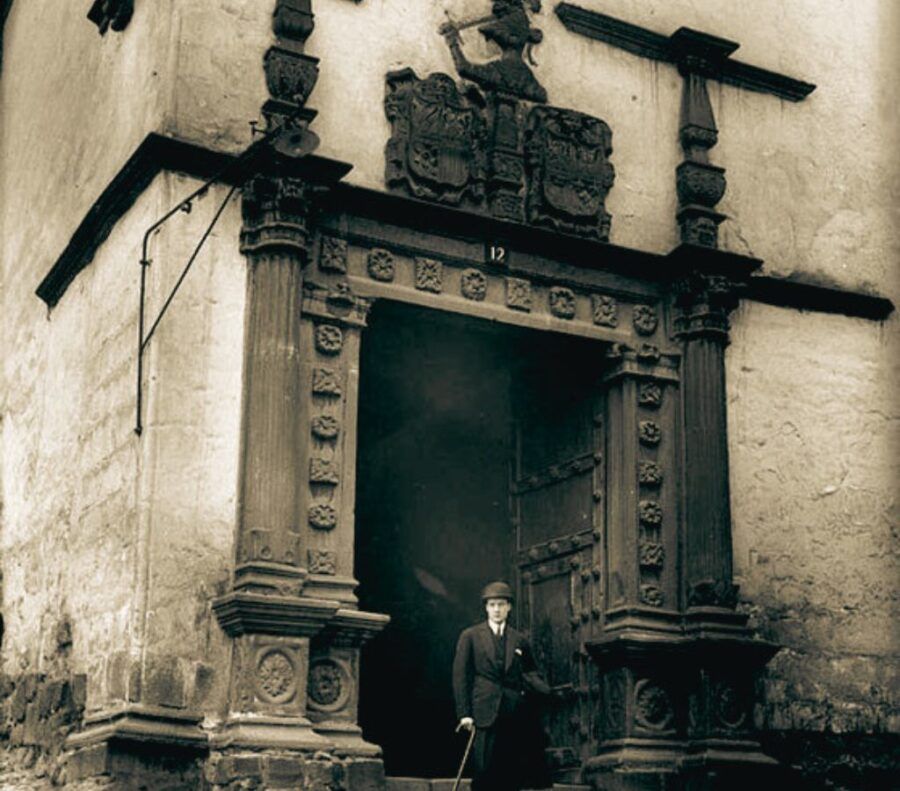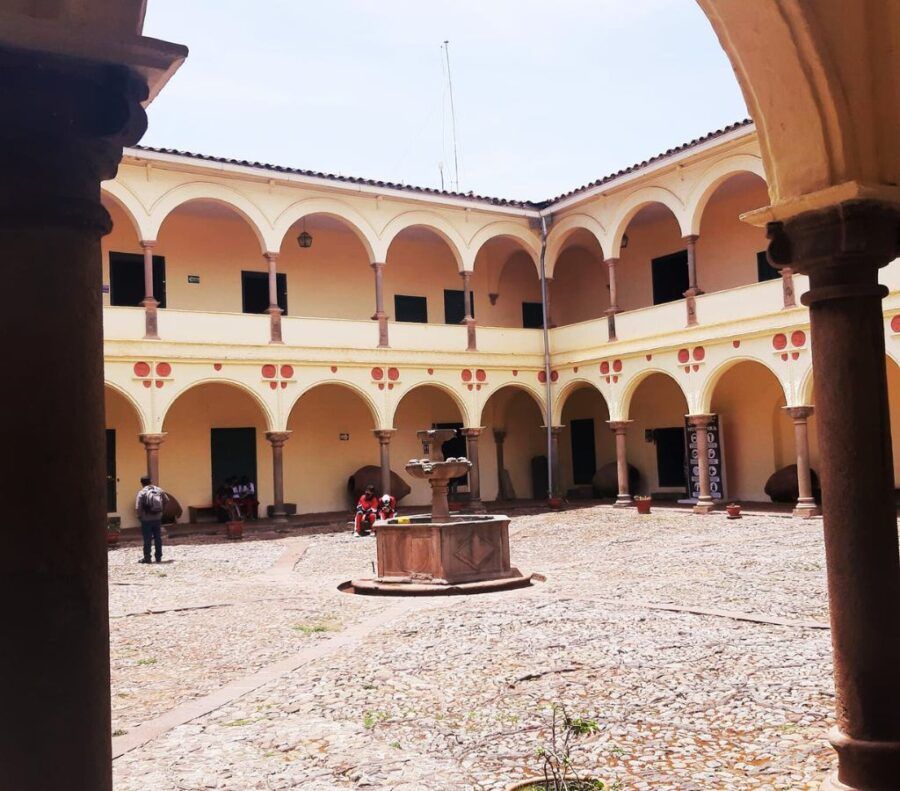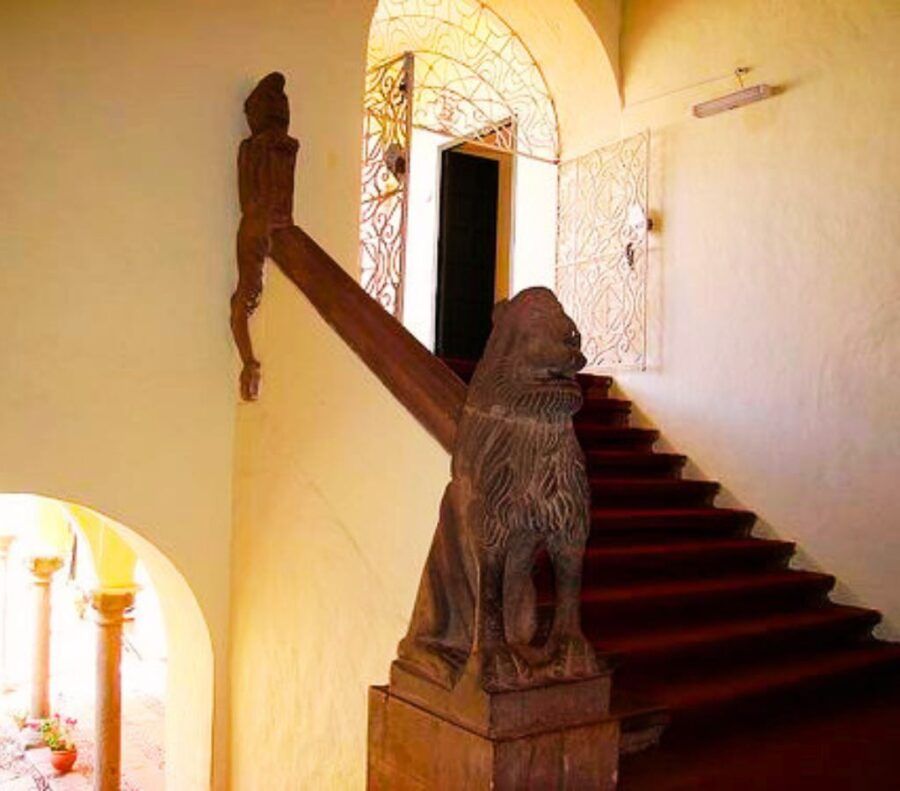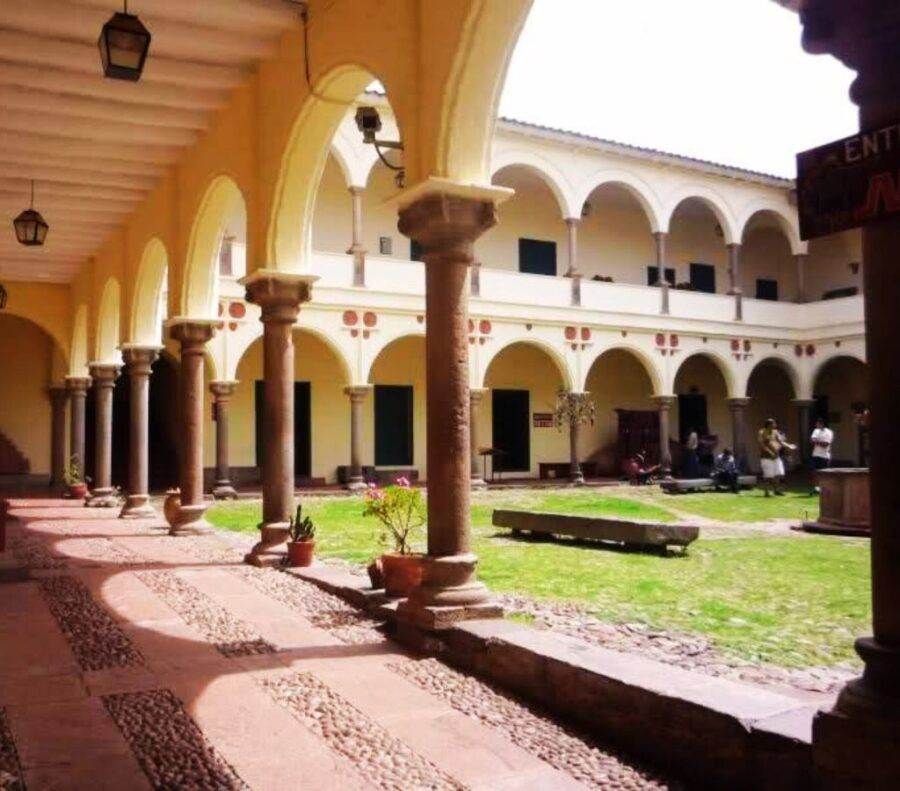If you are walking through the Plaza de Armas of Cusco, then you must visit the House of the Admiral, currently the Inka Museum, this palace was built in the seventeenth century by Admiral Francisco Alderete Maldonado. The place keeps a lot of Inca history which we can visit, as it is noted that this house initially belonged to the emperor Huascar.
In this article we will talk about its history, architecture, about what we can see inside the Admiral's Palace, what to see and when you can visit the current Inka Museum.
Table of Contents
It is located a few meters from the Plaza de Armas of Cusco, at the end of Almirante Street, exactly at 154 Ataúd Street, next to the Plazoleta del Colegio San Francisco de Borja and Córdoba de Tucumán Street.
The arrival of the Spaniards to the city of Cusco in 1533 brought inevitable changes and one of them was the change of the architectural structure, the conquerors in a short time began with the distribution of land and the construction of mansions with European patterns producing a fusion of architecture with the colonial.
The city of Cusco still preserves the colonial mansions and one of the most outstanding is the Palacio del Almirante or La Nave del Dragón, current building of the Inka Museum run by the Unsaac. The Anthrop. And Historian Luis Enrique Tord gives us information about his research on this colonial house published in the Andean Journal of Traditional Studies Tupac Yawri.
On the site where this residence was erected, the emperor Huascar once Francisco Pizarro arrived, he gave the house to Diego de Almagro, then according to the chronicles of the Inca Garcilaso de la Vega, the site was acquired by the Spanish soldier Hernando Machicago as the second owner.
The third owner became the conqueror Juan Alonso Palomino, then passed to Admiral Don Francisco de Alderete Maldonado who is credited with the construction of the mansion. Cusco suffers material damages because of the earthquake of 1950 affecting several buildings and one of them is the Palace that had to be wedded with sticks and does not collapse.
In 1952 it is determined to demolish the house and restore it, but they do not conclude after several inconclusive attempts and in the year of 1975 the National Institute of Cultural (INC) had just been created today Decentralized Direction of Culture (DDC), they take charge of the work of restoration and they are based on old photographs to maintain its original characteristics.
According to the studies of the Anthropologist and Historian Luis E. Tord, who resided in this house was Don Francisco Alderete Maldonado, who would have had Amazonian Templar lineage from where his rank of Admiral would have come from.
Well, now we will detail about its architecture, the meaning of each one of them according to the investigations of the Anthrop. and Historian Luis Enrique Tord; he makes a detailed observation of the aspect of this residence, in which you will be able to see the presence of a nave in the corner formed by the street Ataúd and Córdoba de Tucumán.
This means that the construction of the Admiral's palace was meticulously thought out, aimed at exercising power and keeping a secret even beyond the death of its owner, as stated by Architect Ricardo Ruiz Caro V., who indicates that there is an idea that the soul of the person who lived in this house still survives.
So it is understood that the owner Don Francisco Alderete wanted to do with this building was to build a ship for the journey of his soul, a purification type as did the pharaohs and the Incas themselves who were very notorious.
The ship had to have the elements that responded ritually to the need of its soul and in some way or another was encrypted under the functional architectural foundations and this makes it different and particular with respect to the others.
Likewise, Architect Ricardo Ruiz Caro V. mentions that beyond the magnificent pre-Columbian and colonial architecture, they reflect a whole historical period of which little is known and little is said about the deep spiritual life that was lived during the XVI - XVIII century, where people from many places came to live a spiritual life because of the power of Cusco.
It has a quadrangular two-story main courtyard with arcades and galleries on its sides, in the spandrels highlights gray accompanied by medallions high relief depicting profiles of Roman warriors and empresses embroidered with cherubs and paper leaves.
In the center of the patio there is a fountain with a hexagonal cup, its walls have round figures and alternating rhombuses, since this fountain would represent the compass of the ship; likewise the frieze of the strip that is between the middle of the walls of the patio, is an idiogram, a chain with 500 Kipu Camayoc that would keep the tradition alive despite having passed through three previous owners.
In the interior of the house there is a staircase, at the top of which is the sculpture of a lion that inspires power and terror by its open fauses and its alert position, as Enrique Tord would be guarding the tomb of the admiral.
In conclusion, the Admiral's house keeps many secrets and some of them are represented in its sculptures, because even though centuries have passed, it still has many messages to communicate.




As you could see, we have made a description of the architecture that is in the Admiral's house and you can appreciate it, but we also have the presence of the Inca Museum that will show us many objects of Inca value.
Inside the Inca museum we will be able to see very important collections belonging to:
To enter the Inca museum or the palace of the Admiral you can go from Monday to Sunday from 8:00 am to 4:00 pm, the entrance fee is 5.00 soles for domestic tourists and 10 soles for foreign tourists. Remember to bring your ID or passport, cash, water for hydration.
If you want to visit this and other museums in the city of Cusco I recommend that you buy the BTCI Boleto Turístico Integral, with this you can visit museums, archaeological sites paying a general cost of 130 soles for foreign visitors and 70 soles for domestic visitors.
